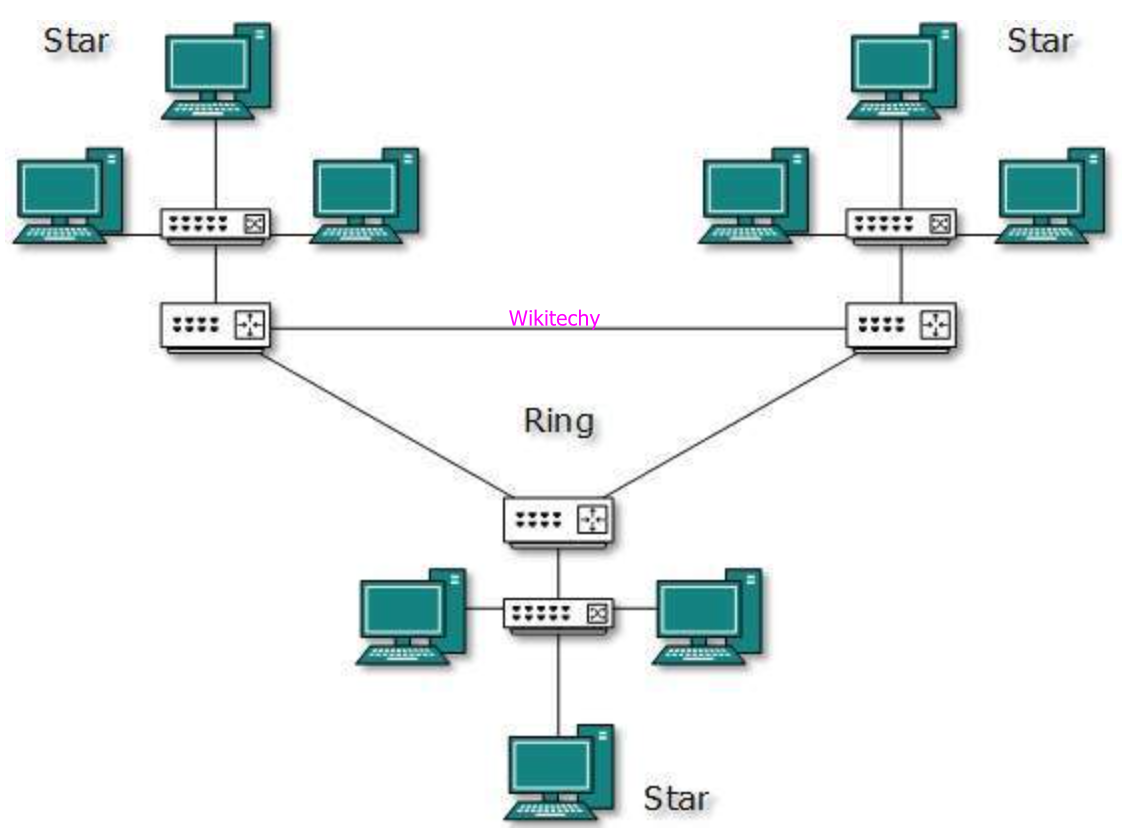- It is the arrangement with which computer network devices or systems are connected to each other.
- The topologies divided into two types they are physical and logical topology.
- It can be also simply defined as a schematic description of a network’s elements’ arrangement.
- Physical network topology illustrates the physical connections within your network while logical network topology illustrates how data flows between your network’s devices, such as its computers and cables.
- Visual diagrams can be used to represent physical and logical topologies, depending on your needs—either can be useful for understanding your network and its layout.
- There are several types of network topology, they are
-
- Bus topology
- Ring topology
- Tree topology
- Star topology
- Mesh topology
- Hybrid topology

Bus topology
- In network it consists of one continuous length of cable that is shared by all the nodes.
- At each end it has a terminating resistor that absorbs the signal when it reaches the end of line.
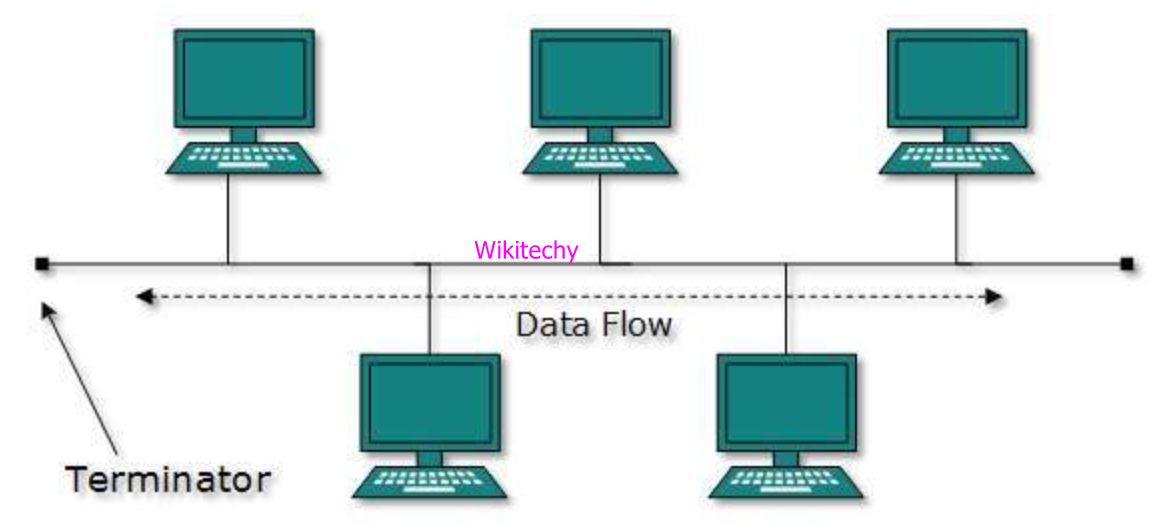
Ring topology
- In this topology each node has two neighboring nodes.
- From one neighboring data packet is received and transmitted to the next.
- The data travels like ring structure in one direction so that it is called as ring topology.
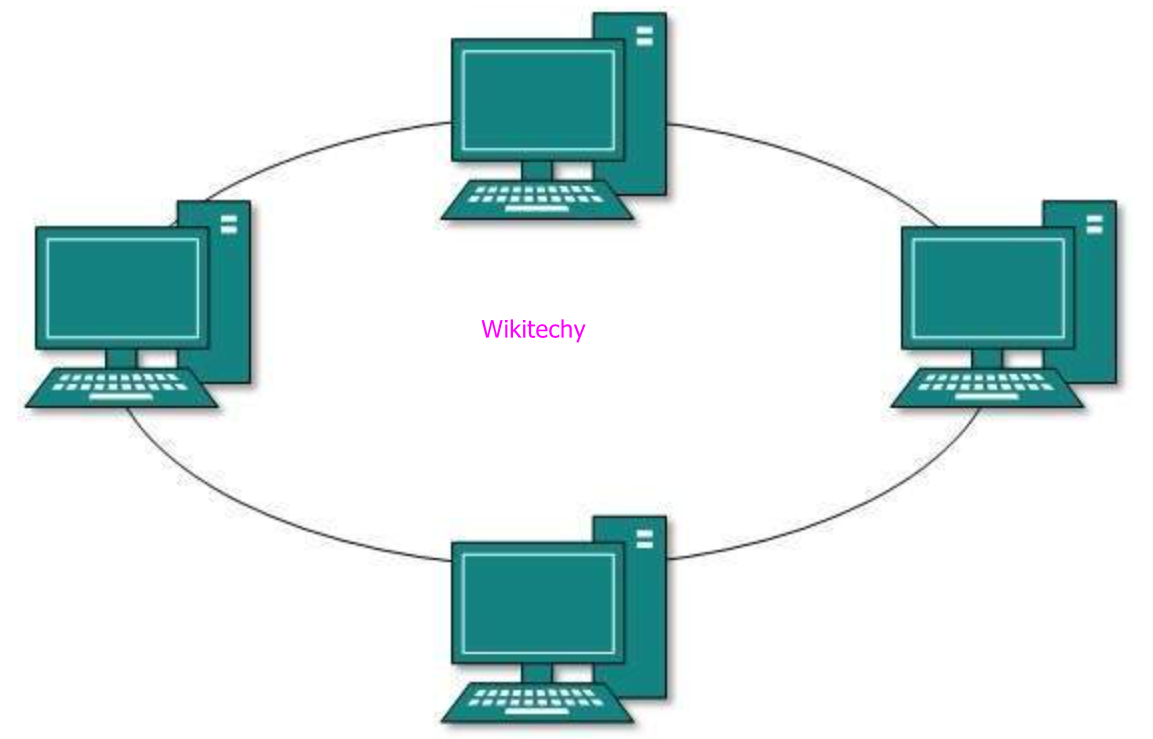
Star topology
- Directly each node connected to a central network hub or concentrator.
- Before continuing data passes through hub or concentrator.
- All functions of network control and managed by hub or concentrator.
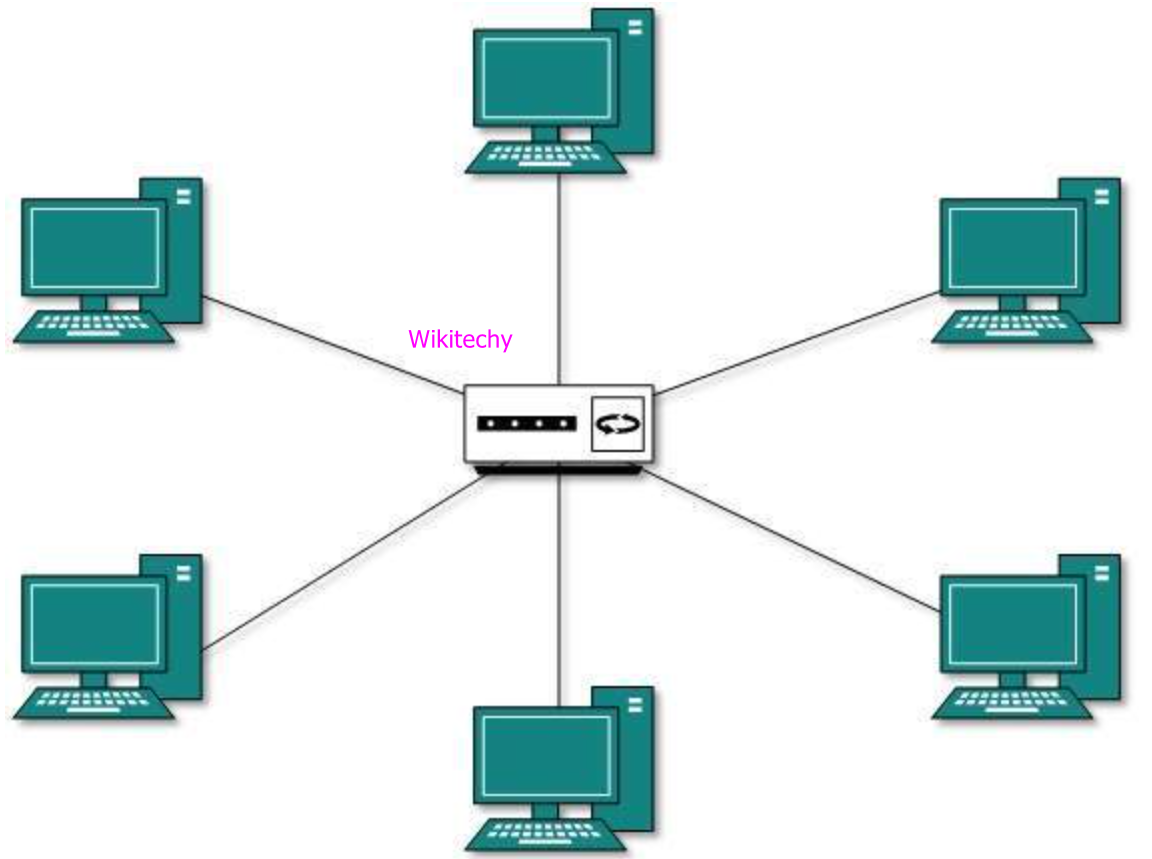
Tree topology
- This type topology combines the characteristics of linear Star and Bus topology. It inverted like tree structure.
- It consists of groups of star-configured workstations connected to a linear bus backbone cable.
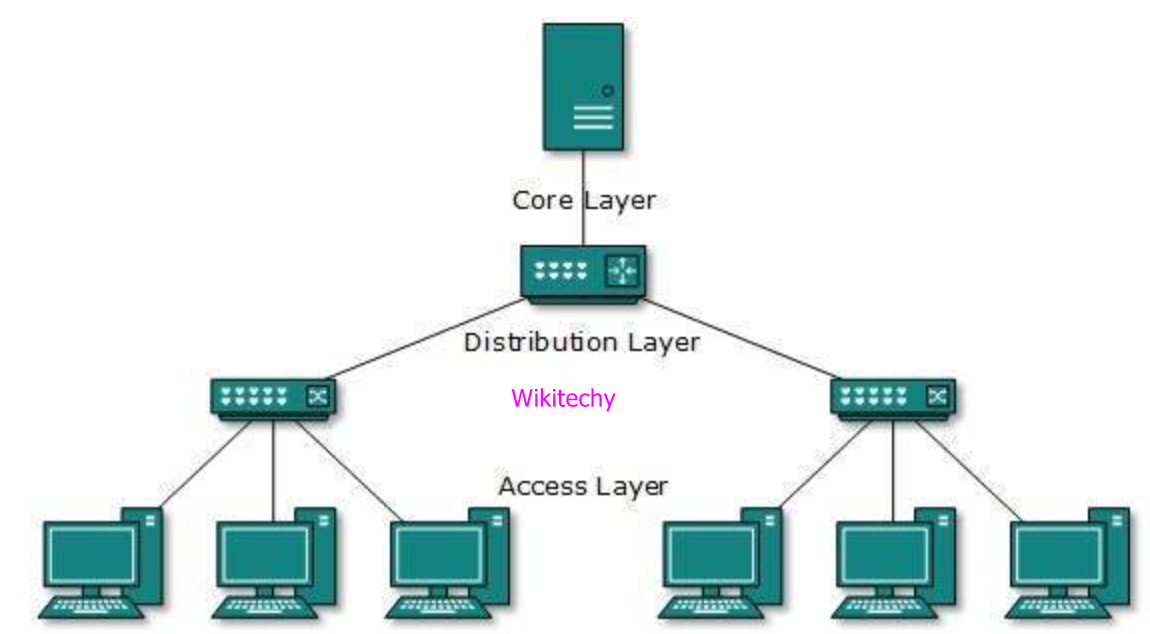
Mesh topology
- In mesh topology each computer is connected to another computer through network.
- This topology has hosts which are in point-to-point connection to few hosts only or hosts in point-to-point connection with every other host.
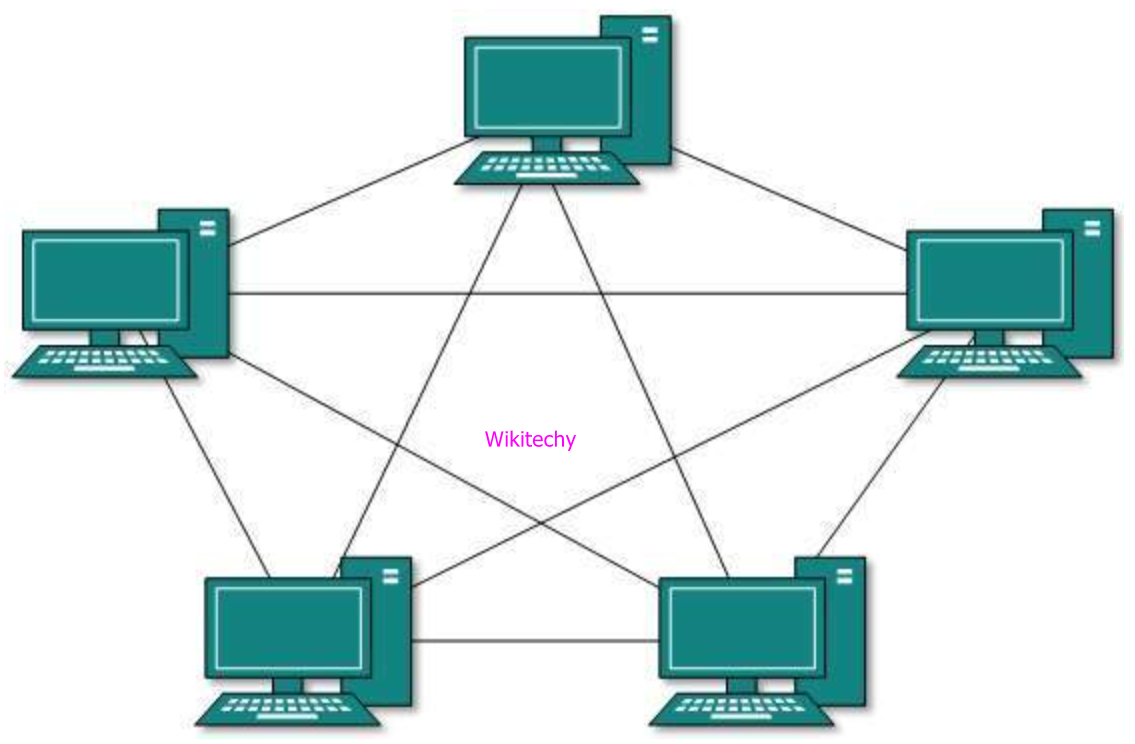
Hybrid topology
- It is an integration of two or more different topologies to form a resultant topology.
- Hybrid topology inherits demerits and merits of all incorporating topologies.
- The combining topologies may contain attributes of Ring, Star, Daisy-chain and Bus topologies.
